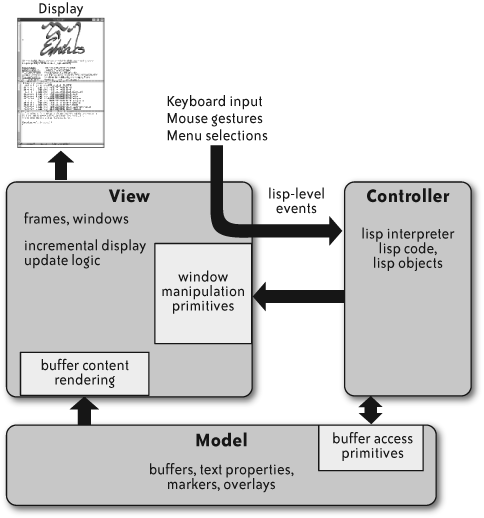Emacs’s Architecture
Emacs’s architecture follows the widely used Model-View-Controller pattern for interactive applications, as shown in Figure 11-2. In this pattern, the Model is the underlying representation of the data being manipulated; the View presents that data to the user; and the Controller takes the user’s interactions with the View (keystrokes, mouse gestures, menu selections, and so on) and manipulates the Model accordingly. Throughout this chapter, I’ll capitalize Model, View, and Controller when I’m referring to elements of this pattern. In Emacs, the Controller is almost entirely Emacs Lisp code. Lisp primitives manipulate buffer contents (the Model) and the window layout. Redisplay code (the View) updates the display without explicit guidance from the Lisp code. Neither the buffer’s implementation nor the redisplay code can be customized by Lisp code.

Figure 11-2. The Model-View-Controller pattern in Emacs
The Model: Buffers
Emacs edits text files, so the heart of Emacs’s Model is the buffer type, which holds text. A buffer is simply a flat string, where newline characters mark line endings; it is not a list of lines, nor is it a tree of nodes, like the document object model that web browsers use to represent HTML documents. Emacs Lisp has primitive operations on buffers that insert and delete text, extract portions of buffer text as strings, and search for matches of ...
Get Beautiful Architecture now with the O’Reilly learning platform.
O’Reilly members experience books, live events, courses curated by job role, and more from O’Reilly and nearly 200 top publishers.

